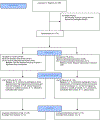Transdiagnostic Sleep and Circadian Intervention in Youth: Long-Term Follow-Up of a Randomized Controlled Trial
- PMID: 38729603
- PMCID: PMC12318444
- DOI: 10.1016/j.jaac.2024.05.001
Transdiagnostic Sleep and Circadian Intervention in Youth: Long-Term Follow-Up of a Randomized Controlled Trial
Abstract
Objective: This preregistered study compared the effects of the Transdiagnostic Sleep and Circadian Intervention (TranS-C) with psychoeducation (PE) about sleep, health, yoga, meditation, and outdoor appreciation activities on sleep and circadian functioning, health risk, and sleep health behaviors at long-term follow-up (LTFU), an average of 8 years following treatment. We also examined if more sleep health behaviors at LTFU were associated with better sleep and circadian functioning at LTFU and if better sleep and circadian functioning were associated with lower health risk at LTFU.
Method: At baseline, we randomly assigned adolescents with an eveningness chronotype to TranS-C (n = 89) or PE (n = 87). Of this sample, we assessed 106 young adults (mean age at follow-up = 22.5 years; n = 55 from TranS-C; n = 51 from PE) an average of 8 years following treatment.
Results: Despite TranS-C (vs PE) sustaining improvement in circadian functioning through 12-month follow-up, at LTFU, there were no significant differences between the conditions on any outcome, including sleep and circadian functioning, risks in 5 health domains indexed by self-report and ecological momentary assessment, sleep health behaviors, and physical measurements. Across both conditions, measures indicating poorer sleep and circadian functioning were associated with higher health risk across multiple domains, and more sleep health behaviors were associated with lower levels of eveningness at LTFU.
Conclusion: These results provide an important window into the influence of development on long-term outcomes for youth and raise the possibility that interventions for youth could be enhanced with a focus on habit formation.
Plain language summary: This study evaluated the effects of a psychological treatment (the Transdiagnostic Sleep and Circadian Intervention [TranS-C]), relative to a psychoeducation active control (PE) at 8 years following treatment, on sleep problems, the preference and tendency for later bedtimes and health risk (ie, risk for worse health). Across both groups combined, the study also examined whether more sleep health behaviors are related to better sleep and whether better sleep is related to lower health risk. At long-term follow-up, there were no differences between TranS-C and PE on any outcome. However, overall poorer sleep was related to greater health risk, and those who engaged in better sleep habits tended to have an earlier "feeling best" sleep rhythm at long-term follow-up. Given evidence that youth tend to outgrow their preference and tendency for later bedtimes with age, our findings shed light on the potential impact of development on long-term outcomes for youth and raise the question of whether treatments for youth could be improved with evidence-based tools for promoting habit formation of positive sleep behaviors.
Clinical trial registration information: Maintaining Behavior Change: A 6-Year Follow-up of Adolescent 'Night-owls'; https://www.
Clinicaltrials: gov/; NCT05098782.
Study preregistration information: Long-term Follow-up of Young Adults Who Received TranS-C to Modify Eveningness Chronotype in Adolescence; https://osf.io/; d5a4g.
Diversity & inclusion statement: We worked to ensure race, ethnic, and/or other types of diversity in the recruitment of human participants. We worked to ensure that the study questionnaires were prepared in an inclusive way. We worked to ensure sex and gender balance in the recruitment of human participants. One or more of the authors of this paper self-identifies as a member of one or more historically underrepresented racial and/or ethnic groups in science. One or more of the authors of this paper self-identifies as a member of one or more historically underrepresented sexual and/or gender groups in science. One or more of the authors of this paper self-identifies as living with a disability. One or more of the authors of this paper received support from a program designed to increase minority representation in science.
Keywords: eveningness; habit formation; psychopathology; sleep; young adults.
Copyright © 2024 American Academy of Child and Adolescent Psychiatry. Published by Elsevier Inc. All rights reserved.
Figures
References
-
- Kazdin AE. Innovations in Psychosocial Interventions and Their Delivery: Leveraging Cutting-Edge Science to Improve the World’s Mental Health. Oxford: Oxford University Press; 2018.
Publication types
MeSH terms
Associated data
Grants and funding
LinkOut - more resources
Full Text Sources
Medical


